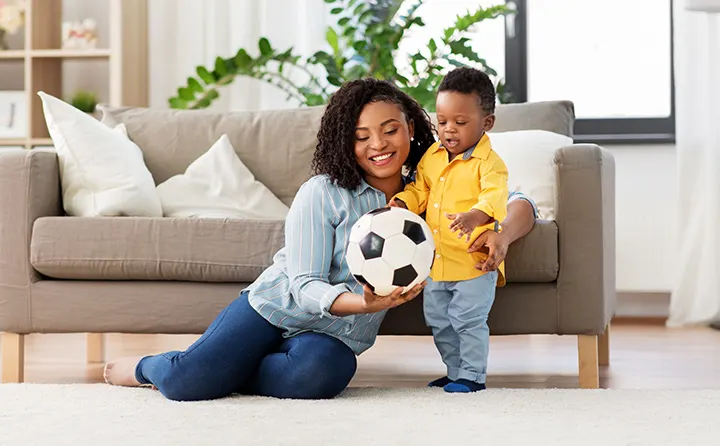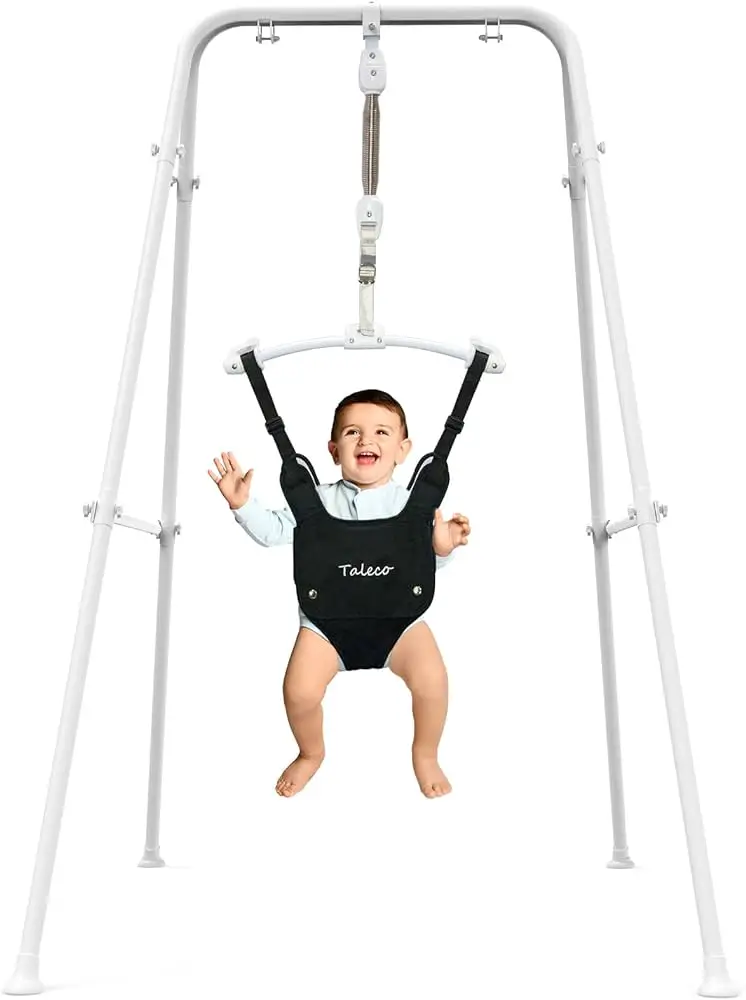What are the Key Points to Consider When Teaching Kids Tennis? 7 Essential Factors.
( If you purchase through our sponsored links, we may receive a small commission at no extra cost to you )
When teaching kids to play tennis, key points to consider include age-appropriate equipment, basic skills development, proper technique instruction, and a positive learning environment. Tennis is a great sport for children to learn as it promotes physical fitness, coordination, and teamwork.
To ensure a successful learning experience, it is important to provide children with equipment that is suitable for their age and size, such as smaller racquets and low-pressure balls. Teaching basic skills, such as hand-eye coordination, footwork, and grip, helps build a strong foundation.
Proper technique instruction is crucial for promoting efficient and injury-free play. Finally, creating a positive learning environment that emphasizes fun, encouragement, and sportsmanship encourages children to develop a lifelong love for the game.

Credit: www.simonandschuster.com
Choosing The Right Equipment
When it comes to teaching kids the game of tennis, choosing the right equipment is crucial. The right equipment not only enhances their playing experience but also ensures their safety and development in the sport. In this section, we will discuss two key points to consider when selecting the appropriate equipment for kids learning to play tennis: selecting the appropriate racket size and using the right type of tennis balls.
Selecting The Appropriate Racket Size
One of the first things to consider when choosing the right tennis racket for your child is the appropriate size. It’s important to select a racket size that matches their age, strength, and height for optimal performance. Here are the recommended racket sizes based on age:
| Age | Racket Size |
|---|---|
| 4-6 years | 19-21 inches |
| 6-8 years | 21-23 inches |
| 9-10 years | 23-25 inches |
| 11+ years | 26 inches or standard adult size |
Choosing the appropriate racket size ensures that your child can comfortably grip the racket and maneuver it effectively, leading to better control and power in their shots. By selecting the right size, you are setting them up for success on the court!
Using The Right Type Of Tennis Balls
Another important aspect of choosing the right equipment is using the correct type of tennis balls. Tennis balls come in different colors and compression levels, catering to various skill levels and age groups. Here are the different types of tennis balls and their corresponding usage:
- Red Balls: These are low-compression balls designed for younger kids (around 4-8 years). They have a slower speed and bounce, making it easier for beginners to develop their hand-eye coordination and technique.
- Orange Balls: Suitable for kids aged 8-10 years, orange balls have slightly higher compression than red balls. They provide a moderate speed and bounce, allowing kids to further refine their skills and prepare for regular tennis balls.
- Green Dot Balls: With a lower compression than regular tennis balls, green dot balls are ideal for kids aged 10-12 years. They offer a slightly slower speed and bounce compared to regular balls, aiding in the transition from low compression to standard tennis balls.
- Regular Tennis Balls: These are the standard yellow tennis balls used by adult players. Kids who have developed their skills and are ready for competitive play can switch to regular tennis balls for a more authentic game experience.
Choosing the appropriate tennis balls for your child’s skill level and age ensures that they can practice and play with balls that match their abilities, enabling them to progress and enjoy the game even more.
By focusing on selecting the appropriate racket size and using the right type of tennis balls, you are providing your child with the necessary tools to excel in their tennis journey. Remember, the right equipment lays the foundation for their development and enjoyment of the sport!

Credit: skoolzy.com
Creating A Positive Learning Environment
Creating a Positive Learning Environment is essential when teaching kids to play tennis. It sets the foundation for their overall experience and can greatly impact their engagement and progress. In this article, we will explore key points to consider in creating a positive learning environment for young tennis players.
Building Confidence And Motivation
One of the primary objectives when teaching kids to play tennis is to build their confidence and motivation. Without these key factors, it becomes challenging for children to fully immerse themselves in the learning process and strive for improvement. Here’s how you can help:
- Encourage small victories: Celebrate even the smallest achievements. Whether it’s successfully hitting a ball over the net or following a specific instruction, acknowledging their efforts and progress can boost their confidence and intrinsic motivation.
- Set achievable goals: Adapt the goals to the child’s skill level and gradually increase the difficulty as they progress. This allows them to experience a sense of accomplishment while keeping them motivated to continue working towards the next milestone.
- Focus on strengths and interests: Identify and nurture the child’s strengths and interests within the sport. By emphasizing what they enjoy and excel at, you enable them to develop a passion for tennis and build confidence in their abilities.
Providing Positive Feedback
The way feedback is given significantly affects a child’s learning experience. Positive feedback not only reinforces good performance but also instills a sense of encouragement and support. Here are some tips on providing positive feedback:
- Be specific: Instead of vague statements like “good job,” provide detailed feedback on what the child did well. For example, “Great footwork on that last shot!” or “You had excellent racket control.”
- Highlight effort over outcome: Focus on the effort they put into learning and practicing rather than solely on the outcome. This promotes a growth mindset and encourages children to continually strive for improvement.
- Use praise effectively: While it’s important to acknowledge achievements, avoid excessive or insincere praise. Genuine praise that recognizes their progress and effort will have a more significant impact on their confidence and motivation.
Creating a positive learning environment involves building confidence and motivation while providing effective and supportive feedback. By implementing these strategies, you can enhance the teaching experience for kids and help them develop a lifelong love for tennis.
Developing Fundamental Skills
If you’re considering teaching your kids to play tennis, it’s important to focus on developing their fundamental skills. These skills lay the foundation for their tennis journey and help them progress to more advanced techniques. In this article, we will discuss the key points to consider when teaching kids to play tennis, with a focus on teaching proper grip technique and focusing on basic strokes and footwork.
Teaching Proper Grip Technique
When teaching kids to play tennis, ensuring they have a proper grip technique is crucial. The grip not only affects their ability to control the racquet but also impacts their overall stroke production. Here are a few key points to keep in mind:
- Importance of a Continental grip: Start by teaching kids how to hold the racquet with a continental grip. This grip allows for versatility and ease in transitioning between different strokes.
- Proper hand placement: Emphasize the importance of placing the base knuckle of the index finger on the third bevel of the racquet grip. Encourage them to maintain a firm but relaxed grip throughout their play.
- Reinforcement through drills: Incorporate fun drills that help reinforce correct grip technique. For example, have them practice shadow swings or hit balls against a wall while focusing on maintaining the proper grip.
Focusing On Basic Strokes And Footwork
Another essential aspect of teaching kids to play tennis is focusing on basic strokes and footwork. By mastering these skills, children can develop a strong foundation for their tennis game. Here’s what you should consider:
- Forehand and backhand techniques: Introduce proper forehand and backhand techniques, including proper swing paths, follow-throughs, and weight transfers. Encourage them to stay relaxed and use their bodies to generate power in their strokes.
- Emphasize footwork: Teach kids to maintain a good court position and emphasize the importance of footwork. Teach them how to move efficiently and utilize split-step technique to react quickly to their opponent’s shots.
- Drills for stroke and footwork development: Incorporate drills that focus on specific strokes and footwork patterns. For instance, have them practice rallying in the cross-court direction to develop their consistency and control.
By teaching proper grip technique and focusing on basic strokes and footwork, you can help your kids develop the fundamental skills they need to excel in tennis. Remember to create a positive and fun learning environment to keep them engaged and motivated throughout the learning process.
Balancing Fun And Discipline
When teaching kids to play tennis, finding the right balance between fun and discipline is crucial. As a coach or parent, it’s important to create an environment that is enjoyable and engaging, while also instilling the necessary discipline and structure for effective learning. By incorporating fun games and activities, as well as establishing clear rules and discipline, you can help young tennis players develop their skills while keeping them motivated and enthusiastic.
Incorporating Games And Fun Activities
To keep kids motivated and excited about learning tennis, it is important to incorporate games and fun activities into their training sessions. These activities provide a break from the traditional drills and help maintain the child’s interest throughout the lesson. Here are some effective ways to make tennis lessons enjoyable:
- Introduce mini-games that focus on specific skills, such as target practice or quick reactions.
- Create friendly competitions that encourage healthy rivalry and teamwork.
- Use colorful props and equipment to make the learning environment visually appealing.
- Allow time for free play, where children have the opportunity to explore the game on their own terms.
Establishing Rules And Discipline
While fun and games are integral components, it is equally important to establish rules and discipline during tennis lessons. Teaching kids to follow instructions, respect their fellow players, and abide by certain guidelines helps create a structured environment for effective learning. Here’s how you can establish rules and discipline:
- Set clear expectations and communicate them to the children at the beginning of each session.
- Encourage active listening and provide constructive feedback to help children understand and correct their mistakes.
- Implement a reward system that recognizes and acknowledges good behavior and adherence to rules.
- Discourage disruptive behavior by establishing consequences such as time-outs or loss of privileges.
By finding the right balance between fun and discipline in tennis lessons, children are more likely to enjoy the learning process while developing essential tennis skills. Remember, a positive and engaging environment is key to their continued enthusiasm and growth as tennis players.
Understanding The Importance Of Safety
When it comes to teaching kids how to play tennis, safety should always be the top priority. Kids are still growing, and their bodies are more prone to injuries. Therefore, it is crucial to emphasize the importance of safety from the very beginning. By instilling good habits and practices, we can help prevent potential injuries and create a safe and enjoyable environment for kids to learn and play tennis.
Emphasizing Warm-up And Stretching
Warm-up exercises and stretching play a pivotal role in preparing the body for physical activity. When teaching kids to play tennis, it is essential to emphasize the importance of warming up their muscles and stretching properly before stepping onto the court. This helps to prevent muscle strains and other injuries that may occur from sudden movements or quick changes in direction.
To ensure a thorough warm-up and stretching routine, you can incorporate the following steps:
- Starting with light aerobic exercises: Encourage kids to engage in light jogging or jumping jacks for a few minutes to increase heart rate and warm-up the body.
- Dynamic stretches: Guide them through dynamic stretching exercises such as leg swings, arm circles, or walking lunges. These exercises help to improve flexibility and range of motion.
- Practice specific tennis warm-up exercises: Introduce a few tennis-specific warm-up exercises such as side shuffling, high knees, or skipping. These exercises target the muscles and movements used in tennis and help prepare the body for the game.
Teaching Proper Court Etiquette And Injury Prevention
Aside from physical safety, teaching kids proper court etiquette and injury prevention is equally important. By setting clear rules and guidelines, we can foster a safe and respectful environment for everyone.
Here are a few key points to consider:
- Respect the court boundaries: Teach kids to understand and respect the boundaries of the court. This includes not stepping over the lines, avoiding unnecessary collisions with other players, and being cautious to prevent accidents.
- Using the right equipment: Ensure that kids are using age-appropriate and properly-fitted tennis rackets and shoes. Ill-fitting equipment can cause discomfort and increase the risk of injuries.
- Staying hydrated: Emphasize the importance of staying hydrated during tennis sessions. Encourage kids to drink water regularly to prevent dehydration, especially during hot weather.
- Promoting good sportsmanship: Teach kids the values of fair play, respect, and cooperation. Emphasize the need to follow the rules, support fellow players, and accept both victories and losses graciously.
By teaching kids proper court etiquette and injury prevention, we can create a safe and inclusive space for them to enjoy the game of tennis while minimizing the risk of accidents or injuries.
Tailoring Instruction To The Individual Child
When teaching kids to play tennis, it is crucial to tailor the instruction to the individual child. Every child is unique with different learning styles, abilities, and interests. As a tennis coach or parent, understanding these differences and adapting your teaching methods accordingly is key to fostering a positive and effective learning environment. By considering the individual needs of each child, you can better engage them in the sport and help them develop their skills.
Adapting Teaching Methods To Learning Styles
Children have different learning styles, such as visual, auditory, and kinesthetic. To ensure effective instruction, it is important to adapt teaching methods to cater to these distinct styles. For visual learners, incorporating visual aids like diagrams or videos can enhance their understanding of techniques and strategies. Auditory learners may benefit from clear and concise verbal explanations combined with practice drills. Kinesthetic learners, on the other hand, learn best through hands-on experiences and physical demonstrations. Providing opportunities for these children to actively participate in drills and practice exercises is essential for their development.
By incorporating a variety of teaching techniques that align with different learning styles, you can engage each child in a way that suits them best, ultimately enhancing their overall learning experience.
Encouraging Individual Progress And Skill Development
When teaching kids tennis, it is important to focus on individual progress and skill development. Each child will have their own unique abilities, strengths, and weaknesses. Instead of comparing them to others, it is crucial to keep the focus on their personal growth and improvement.
To encourage individual progress, provide regular feedback and positive reinforcement. Recognize their accomplishments, no matter how small, and highlight areas of improvement. Celebrate their successes and offer constructive critiques to help them refine their skills and technique. By acknowledging their efforts and fostering a growth mindset, children will be motivated to continue practicing and striving for excellence.
Additionally, tailoring drills and exercises to match the child’s skill level and challenging them appropriately will promote continuous development. As they master one skill, gradually introduce more advanced techniques to keep them engaged and motivated. This individualized approach not only enhances their tennis abilities but also boosts their self-confidence and overall enjoyment of the sport.
Encouraging Sportsmanship And Fair Play
When teaching kids to play tennis, it is important to instill values of sportsmanship and fair play. These qualities not only contribute to a positive playing experience but also foster important life skills. By emphasizing respect for opponents and officials, as well as modeling good sportsmanship behaviors, children can grow not only as athletes but also as individuals.
Teaching Respect For Opponents And Officials
Respecting opponents and officials is crucial in any sport. It creates a healthy competitive environment where athletes can challenge themselves and learn from one another. To teach kids respect for opponents and officials, consider the following strategies:
- Emphasize fair play: Teach children the importance of following the rules and playing within the boundaries set by the game. Encourage honesty and discourage cheating or unsportsmanlike behavior.
- Highlight the values of teamwork and camaraderie: Tennis may be an individual sport, but it is essential to underscore the significance of teamwork and camaraderie both on and off the court. Emphasize the notion that opponents are not enemies but valuable competitors who help improve their skills.
- Encourage positive interactions: Teach kids to greet their opponents with a handshake or a friendly gesture before and after each match. Emphasize the importance of showing respect towards officials by listening and following their decisions without argument.
Modeling Good Sportsmanship Behaviors
Children often emulate the behaviors they see from their role models. As a coach or parent, it is essential to model good sportsmanship behaviors to teach kids how to act appropriately on and off the tennis court. Here are some ways you can model good sportsmanship:
- Show respect to opponents: Demonstrate respectful behavior towards opponents, even in challenging situations. Encourage positive language, even when experiencing frustration or disappointment.
- Exhibit grace in victory and defeat: Teach children to gracefully accept both wins and losses. Emphasize the importance of applauding the opponent’s abilities and efforts, regardless of the outcome.
- Encourage gratitude and appreciation: Instill values of gratitude by expressing appreciation towards opponents and officials for the opportunity to compete. Encourage children to thank their opponents for a good match and officials for their time and dedication.

Credit: www.facebook.com
Frequently Asked Questions For What Are The Key Points To Consider When Teaching Kids To Play Tennis?
How Do I Teach My Child Basic Tennis?
Teaching your child basic tennis is easy! Start by introducing them to the game and explaining the rules. Practice basic skills like hand-eye coordination and footwork. Gradually introduce more techniques and strokes. Encourage them to play and have fun while learning.
With time and practice, they’ll become a tennis pro!
How Do You Introduce A Child To Tennis?
Introducing a child to tennis is best done by enrolling them in tennis lessons. They will learn the basic skills, rules, and techniques in a structured environment. Encourage their interest and practice regularly to help them develop their skills and love for the sport.
How Do You Structure A Tennis Lesson?
A tennis lesson is structured by following a consistent format. Start with a warm-up, then move on to skill-building exercises such as drills and practicing different shots. Next, focus on strategy and match play. Finish with a cool-down and review of what was learned.
The lesson should be tailored to suit the player’s skill level and goals.
How Can I Encourage My Child To Play Tennis?
Encourage your child to play tennis by introducing them to the sport and providing positive reinforcement. Offer to play with them, enroll them in tennis lessons or camps, and show interest in their progress. Make it fun and enjoyable for them to develop a passion for tennis.
Conclusion
Teaching kids to play tennis requires careful consideration of various key points. Starting with introducing basic skills and techniques, it is important to maintain a positive and encouraging environment. Consistency, patience, and adaptability are crucial when teaching young players. Furthermore, emphasizing fun and enjoyment over performance will help foster a love for the sport.
Remember, every child is unique and progresses at their own pace. By following these guidelines, you can guide them towards becoming successful tennis players in the future.




![How to Create a Positive Sports Experience for Children? [Importance & the Ways]](https://sportstotry.com/wp-content/uploads/2024/01/Positive-Sports-Experience-for-Children.jpg)
